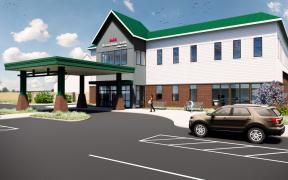With certain bladder issues occur, doctors can perform a cystoscopy to see, diagnose and treat the problem. MaineHealth has experienced providers trained in the latest medical technology to provide you with the best care.
What is a cystoscopy?
Cystoscopy helps doctors get a better look at the bladder and urethra (the tube that carries urine out of the bladder). Doctors have the ability to take a biopsy, or tissue sample, during a cystoscopy. Very small bladder stones and tumors can also be removed this way.
A very thin tube-like tool with a tiny camera called a cystoscope is used during the procedure. It is inserted into the urethra. Other tools can be inserted into the cystoscope to perform biopsies and other diagnostic functions.
When is a cystoscopy done?
Cystoscopies can be done when a patient has bladder problems, such as frequent urinary tract infections (UTIs) or blockage. Cystoscopies and biopsies can be used to diagnose:
-
Bladder diseases
-
Bladder stones
-
Bladder cysts
-
Enlarged prostate
Local, general, and spinal anesthesia can be used for cystoscopy procedures. Patients will not feel anything under general and spinal anesthesia. With local anesthesia, patients may feel a strong sense to urinate or a burning sensation.
Recovery from a cystoscopy
Most patients do not take long to recover from a cystoscopy. With local anesthesia, patients can continue with their day after the procedure is done. General or spinal anesthesia usually wears off within an hour after the procedure. Patients will be able to function normally.
Complications are uncommon following a cystoscopy. Doctors typically give antibiotic medicine before a cystoscopy to prevent urinary tract infection. Patients may experience a swollen urethra and sore muscles for a few days after the procedure.































